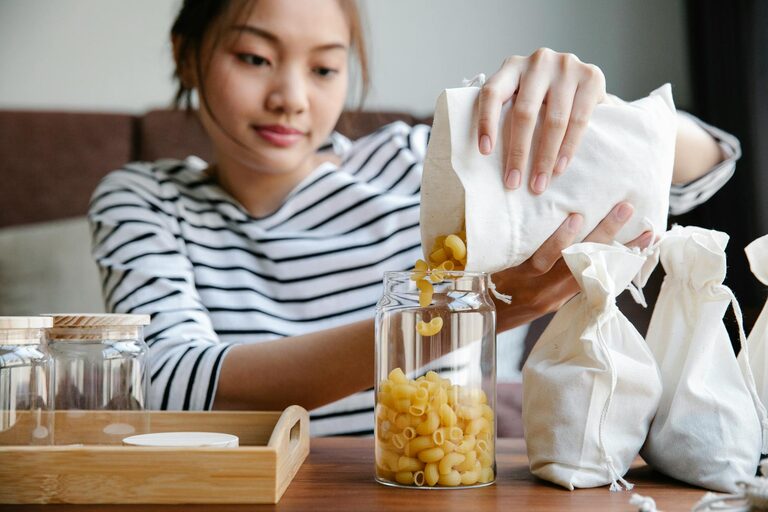Reducing food waste at home is a smart way to save money, protect the environment, and create a more sustainable lifestyle. Every year, millions of tons of food are discarded unnecessarily, often because of improper storage, overbuying, or simply forgetting about ingredients. Fortunately, with some thoughtful habits and small changes, anyone can make a significant difference. In this post, we’ll explore practical ways to minimize food waste in your household.
Why Reducing Food Waste Matters
Before diving into tips, it’s helpful to understand why food waste is a big deal. When food is wasted, all the resources involved in producing it—water, energy, labor, and transportation—are also wasted. Additionally, food scraps that end up in landfills produce methane, a harmful greenhouse gas that contributes to climate change. By cutting down on food waste, you not only save money but also help reduce your environmental footprint.
Plan Your Meals and Shopping
Make a Weekly Meal Plan
One of the most effective ways to avoid food waste is to plan your meals ahead. When you decide what you’ll cook for the week, you can buy only the ingredients you need, reducing the likelihood of buying excess food.
– Choose recipes based on what you already have at home.
– Consider meals that use similar ingredients for easier shopping.
– Include leftovers as part of your meal plan.
Create a Detailed Shopping List
Once your meals are planned, write a shopping list that matches exactly what you need. Stick to this list to avoid impulse buys or duplicate items.
– Check your pantry and fridge before shopping.
– Buy loose fruits and vegetables to get the quantity you need, rather than prepackaged amounts.
– Be realistic about portion sizes.
Store Food Properly
Proper storage can dramatically extend the freshness of food and reduce spoilage.
Use Airtight Containers
Invest in airtight containers for leftovers, dry goods, and perishable items. This keeps food fresh and prevents contamination.
Know How to Store Different Foods
– Fruits and Vegetables: Some fruits, like apples and bananas, release ethylene gas, which can speed up ripening of other produce. Store them separately.
– Herbs: Keep fresh herbs like parsley and cilantro in a jar with water, like a bouquet.
– Bread: Store bread in a cool, dry place or freeze it to prevent mold.
Label and Date Your Food
Use labels or masking tape to mark the date each item was opened or cooked. This organization helps you use foods in order and avoid forgetting about them.
Use Leftovers Creatively
Leftovers don’t have to be dull or boring. Get creative to make the most of extra food.
Repurpose Leftovers
– Turn vegetables into soups or stews.
– Use stale bread to make croutons or breadcrumbs.
– Transform rice into fried rice or rice pudding.
Store Leftovers in Portion Sizes
Keep leftovers in small containers so it’s easier to reheat just the amount you want without wasting food.
Embrace Portion Control
Cooking or serving too much food often leads to waste.
– Use measuring cups or scales to cook the right quantity.
– Serve smaller portions initially and allow seconds if still hungry.
– Freeze extras if you can’t finish a meal.
Compost Food Scraps
Even with the best efforts, some food waste is inevitable. Composting is an eco-friendly way to dispose of organic waste.
– Collect fruit and vegetable peels, coffee grounds, and eggshells in a compost bin.
– Use compost in your garden or potted plants to enrich the soil.
– If you don’t have space for a traditional bin, consider worm composting or community compost programs.
Be Mindful of Expiration Dates
Understanding food labels can help avoid unnecessary disposal.
Know the Difference Between “Best By,” “Use By,” and “Sell By”
– Best By: The date indicating peak quality; food is usually still safe after this date.
– Use By: The last date recommended for use while at peak quality.
– Sell By: For stores; not a safety date.
Use your senses—smell, look, and taste—to judge if food is still good.
Buy Imperfect or “Ugly” Produce
Many perfectly good fruits and vegetables are discarded because they don’t look perfect.
– Many stores now sell imperfect produce at discounts.
– Buying these helps reduce waste at the source.
– They taste just as good and can be used in cooking or smoothies.
Summary
Reducing food waste at home is all about being organized, mindful, and creative. By planning meals, shopping smartly, storing food correctly, making the most of leftovers, and composting scraps, you can save money and contribute to a healthier planet. Start with small changes today and watch how they add up over time.
Remember: every meal saved from the trash is a win for your wallet and the environment!

